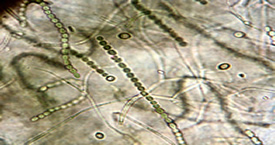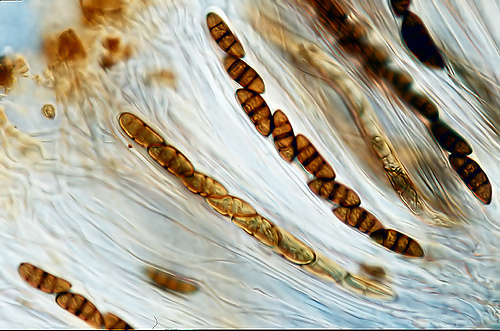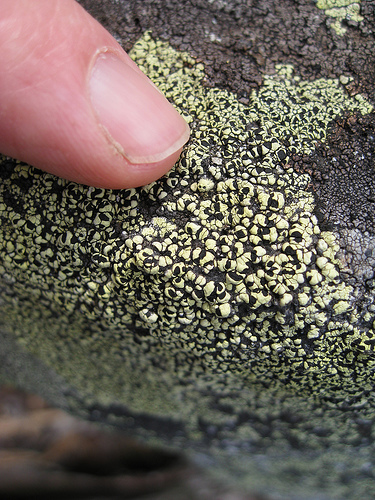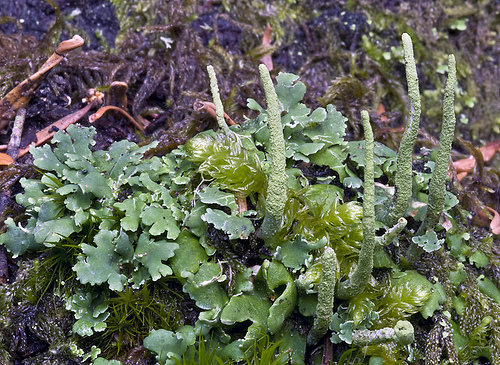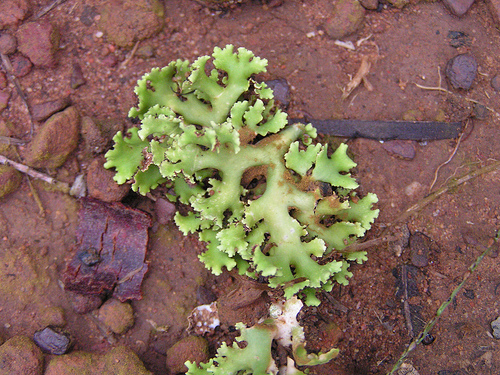- Domain-Eukarya
- Kingdom-Fungi
- Phylum-Ascomycota
- Class-Lecanormycetes
- Order- Lecanorales
-
Family-Cladoniaceae
- Genus- Cladonia
- Species- Cristatella
-
Family-Cladoniaceae
- Order- Lecanorales
- Class-Lecanormycetes
- Phylum-Ascomycota
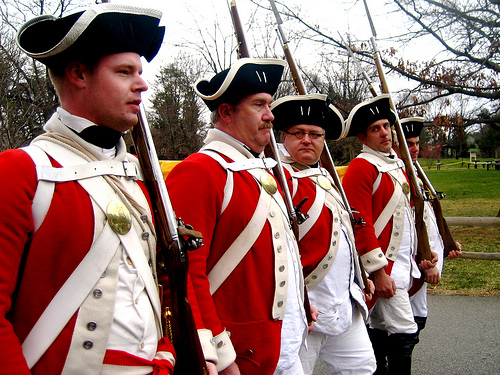 vs
vs 
Do you see the resemblance?
So... Why do we classify this organism the way we do?
Eukarya:
This is the broadest way and the first way we start to classify different organisms. For an organism to fall in this domain, it must have specific characteristics. The nucleus is a definitive structure found in all Eukarytic organisms. In addition to this, Eukaryotes often exhibit:
- Membrane bound organelles
- multicellularity (not always the case however)
- 80s ribosomes (ribosomes are used in the creation of polypeptides, the precursor to amino acids and protein. )
- The presence of true chromosomes. Prokaryotes (like bacteria)contain circular DNA structures called plasmids.
- Microtubules and microfilaments are often present in Eukaryotes as well.
- There are many other differentiating features between the two domains, however these are some of the most significant differences.
- Kingdom-Fungi
Fungi:
The classification of this species as a fungus is perhaps the most interesting. Cladonia cristatella, which is a lichen, exhibits symbioses with Trebouxia erici, a species of algae.
Some common characteristics of fungi are:
- A chiton exoskeleton. Chiton is a complex carbohydrate which exhibits extreme rigidity. This carbohydrate also composes the exoskeletons of arthropods (spiders, insects, etc.)
- Usually fungi are classified as saphrophytes because they break down dead material for energy. Lichens however are not like regular fungi. As stated earlier, their symbiotic relationship with Trebouxia erici provides the lichen with many of the nutrients necessary to thrive. Since this species of algae can photosynthesize, it does not have to rely on acquiring sustenance from other sources.
- Most fungi (the exception being many yeast species) exhibit structures called hyphae. The picture below is an example of a lichen (not sure of the species) exhibiting hyphal structures along with its cyanobacterial symbiont. The symbiont in this species is different than the one found in Cladonia, but I think it gives us a good idea of what hyphal structures in lichens look like.
Ascomycota:
This Phylum gets its name from the structure that it produces during sexual reproduction. Asci are held in a larger structure called an ascocarp. An example you may be familiar with is the morel or Morchella.
The image to the right is an example of an ascus from an unspecified lichen species and to the right is Cladonia cristatella.
The red tops of the lichen are the ascocarps in this species, whereas the dark brown structures on the left are the asci.
Lecanormycetes:
This class is important because it contains exclusively lichenized fungi. If it falls in this class then you will probably have an idea of what it is. Other than lichen characteristics, there is really no other way to differentiate this. Most lichenized fungi do fall within this category.
Lecanorales
This order is composed of about 5,500 species, 99% of which are lichenized, with 43 of the 64 families of lichens falling under this classification. In addition to the lichen predominance in this order, the lichen species described here typically display symbiotic relationships with algae from the genera Trebouxia and Asterochloris. The growth forms in this order are classified as crustose, squamulose, foliose, and fruticose.
What kind of growth do you think Cladonia cristatella exhibits?
Cladoniaceae
Reindeer lichens and cup lichens fall within this family. In the United States, it is currently estimated that there are 70 cladoniaceae species. Along with the family Lecanoraceae, organisms within this family exhibit rostrate dehiscence. This means the fruiting body, which is the red part on Cladona cristatella, opens like a beak (rostrate) at maturity. Unfortunately, little is known about this family due to the lack of research that has been conducted thus far.
Cladonia
This is the genus that contains our organism of discussion, Cladonia cristatella. Interestingly enough, only this genus and the genus Cladina posess free capillary water within their hollow podetia. A podetia can be described as the thallus where the ascocarp is bourne (be sure to remember the role of the ascocarp). In addition pyncidia, the structure that contains the spores, is located on the podetia. They form in many regions of the world, ranging from the arctic tundra all the way to the tropics. Oftentimes, they cover the ground of an ecosystem and resemble shrubs. Reproduction occurs via fragmentation, however spores are also produced as well. This genus is very morphologically variable, but it is also the first major group of lichens that beginners start to recognize.
cristatella
This is our British Soldier Lichen. These lichens are usually found around dead or dying trees in the northeastern quadrant of the United States and the eastern half of Canada. They have a green thallus and red ascocarp (the fruiting body). This ascocarp is the part of the lichen that resembles a late 18th century Brtish soldier.
Despite the historical lack of interest in lichens, more research is now being conducted. Due to their relatively low interaction with humans, little research has been conducted. With the advent of molecular tools throughout the past thirty years, we'll hopefully learn more about Cladonia cristatella and other lichens. Through the knowledge we gain from their study, perhaps we'll find ways to improve our own lives. Now that we've looked at the lichen itself, it's also important to understand the lineage of Trebouxia erici, the photobiont associated with Cladonia cristatella.
